In the treatment of ophthalmic pathology, surgery in the eyes is considered the most effective method.Thanks to modern medical technology, eye surgery intervention is very rapid.They do little damage to the eyeball, but sometimes unforeseen complications can occur.Since each surgery has its own contraindications, the type of surgery can be selected separately depending on the type of disease.To reduce the risk of failure after treatment, your doctor recommends that you take all necessary tests.
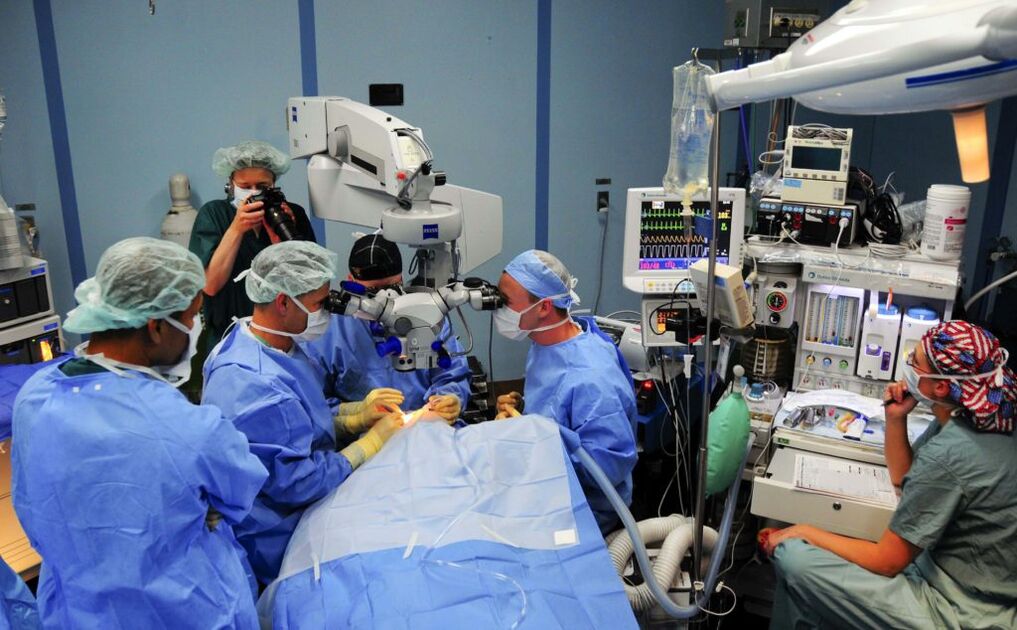
Indications
The process is prescribed after a thorough visual examination and all necessary diagnostic procedures.Therefore, any surgery is a risk before it is recommended and doctors will try conservative treatments with medications.Surgery is only prescribed if the medication does not give the expected results.Indications for surgery:
- Malnutrition in the eyes;
- Belm group on the cornea;
- Corneal structure;
- Traumatic damage to visual organs;
- Keratoglobus;
- Severe pathological changes in the organ.
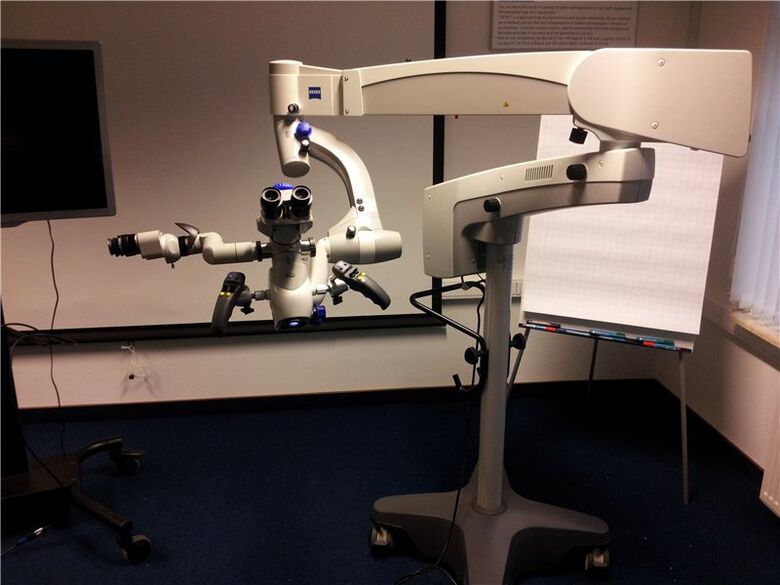
Types and behaviors
Before the operation, it is necessary to make a diagnosis and the doctor will express the test list during the consultation.Each patient can choose a visual correction method individually, and patients with cataract, myopia, strabismus, harazi, glaucoma and other risk deviations can be recommended to the patient.During the manipulation, ophthalmologists use modern medical devices, intervene with microscopes, and adjust vision through very small incisions.Because the procedure is simple and less traumatic, long-term hospitalization is not required.After 2-3 hours, the doctor explained to the patient in detail all the nuances of the recovery period, how to take care of the eyes, and then went home.Severe pathology is recommended only (retinal detachment, severe inflammation, penetration of wounds).There are such types of operations:
- Laser surgery;
- Vitrectomy;
- Trabekulsopary;
- LTP, lying;
- Focal emulsification;
- scleroplasty;
- Keratogenesis;
- The cause of the eyes;
- Refractive replacement of the lens;
- Crosslinking;
- Reverse - with operation.
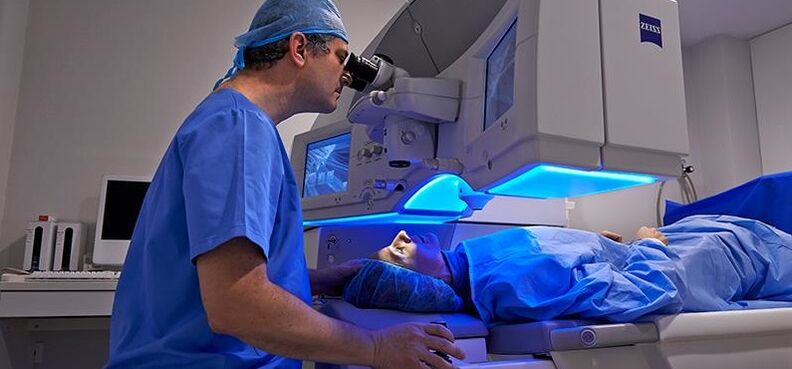
Laser vision correction
Operate for damage and rupture of the retina.The patient must undergo a thorough examination before consent.Before the intervention, the dripping of the expansion students is dripping.With the help of lasers, the eyes are made by microsurgery (weak area of tissue), which prevents the penetration of the fluid and then detachment.The laser coagulation of the retina is simple and takes a few minutes in time, and even children can tolerate it well.
The surgery was performed under local anesthesia.During recovery, patients are advised to give up active exercise, bad habits and physical overload.The negative consequences of laser vision correction can be manifested within 3 hours - this is the increased secretion of tears, phobia, redness, discomfort and friction in the eyes.Doctors do not recommend this procedure for under 18 years of age.The percentage of vision recovery after laser correction is very large.
Keratogenesis
With irreversible pathological changes in the eyes, Okulists recommends using this procedure.After injury, surgery to restore vision and eyes involves complete removal of the pathological changes of the cornea, which is then replaced by a donor.There may be many reasons for surgical intervention - it is corneal structure, severe damage to eye tissue, EED, ulcer changes and genetic predispositions caused by fungal infections.During the surgery, local anesthesia is used.Using these instruments, the doctor needs to remove the sore cornea, then replace it with a healthy cornea, and then apply the seams.It takes about 2 hours.The recovery period is 1 year.It is recommended to protect the glasses with glasses, which will prevent organ injuries and post-operative complications.
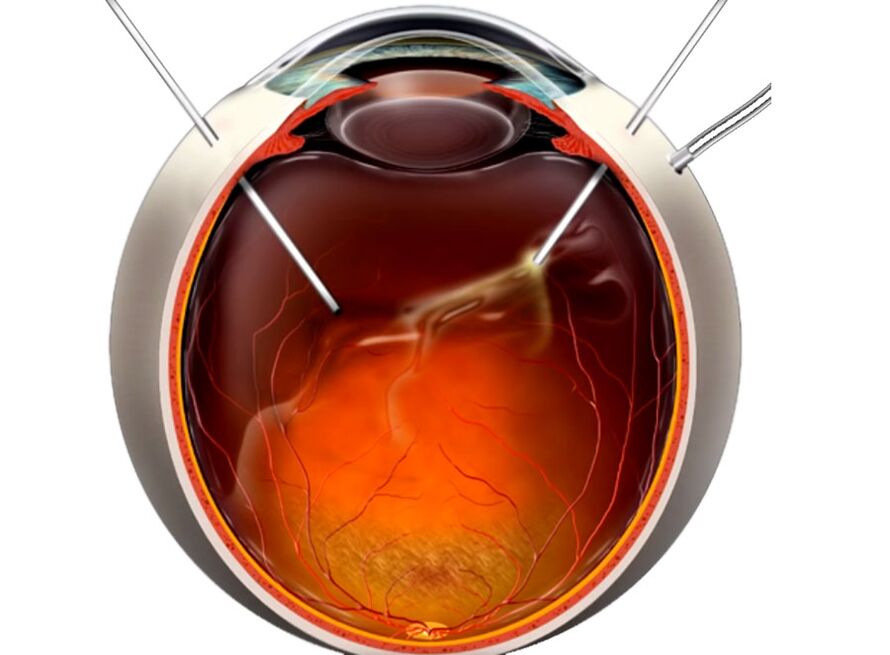
Vitrectomy
Vision correction is performed by pathologically altering blood vessels on the retina and when removing them.Thanks to professional manipulation, the doctor will enter the back of the eye.After removal, the vitreous body is replaced by the donor material.Brine solutions, silicone oils, polymers and purebred compounds are used as special liquids.In ophthalmology, vitrectomy is considered a differential methodology, with little interference to the visual organ system, which helps the patient return to the patient.With this method, the structure of the retinal can be restored to prevent the development of pathology, whose name is traction and retinopathy.
Since the air is filled with many dust particles to prevent infection after organ correction, it is necessary to use a bandage to tightly bond the surgical eyes for a period of time.
Reverse - with operation
If medication is not authorized, ophthalmic surgery should be used and only after a complete examination.This type of intervention does not cause pain, it is made quickly, usually used to treat closed and open corneal glaucoma, as well as when blood vessels sprout.The essence of this process is to eliminate accumulated fluid inside the organ, which is performed by laser light.The most effective method is considered a deep sclerosis resection without ejection.During the treatment process, the corneal layer is interpreted surgically, thereby reducing intraocular pressure.The possible consequences of this operation can be expressed in the formation of scars, first of all, the eyes may be red.
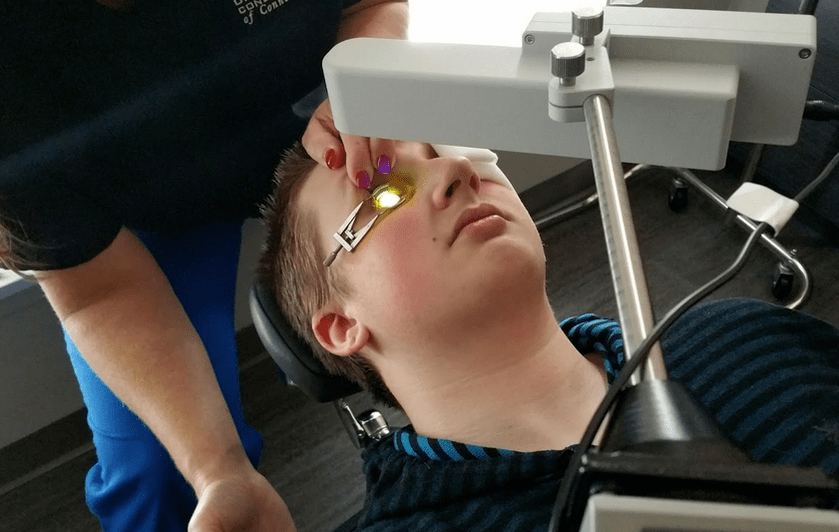
Cross-linking
Using it a fairly new way to treat keratoconus can prevent the development of the disease in the early stages.Use a tool called Boring Light and then drop vitamin B into glasses socket2, it is possible to enhance the cornea and stabilize the patient's condition.One plus point to this program is that the operation is performed only once, and 1 hour is enough to perform the operation.To reduce the risk of injury, special protective lenses are placed on the eyeball.
Eye temptation
This is a complex surgical procedure, only in extreme cases, if the organ cannot be preserved in different ways, then prescribed in extreme cases.The eye is completely removed from the socket and the fiberglass prosthesis is implanted in the position, looking like it is real.When side effects are performed, these are unpredictable inflammatory processes and implant displacements.Testimony includes:
- Glaucoma reaches its end;
- The emergence of pain and the development of blind spot inflammation;
- Severe injury and tumors.
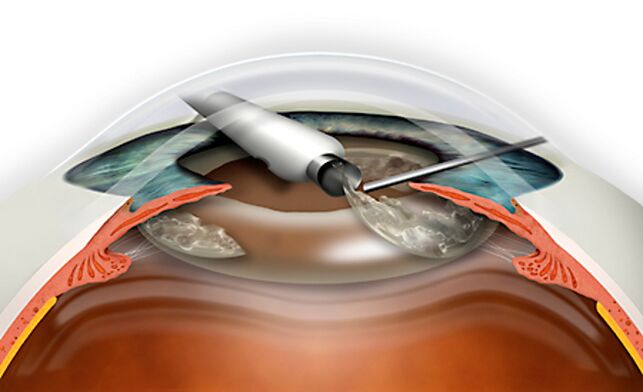
Refraction of lens
During surgery, elements of the visual system that is damaged in the artificial system occur.When choosing a human glasses lens, consider the individual characteristics of the patient (age, gender).The procedure lasts for 25 minutes, and local anesthesia is used, surgically manipulating no blood.Through micronaras via ultrasound, the lens is turned into a lotion and removed from the eyes.Refraction substitution is made by:
- Run myopia and hypercopy;
- Presbyterian Church;
- Laser correction is prohibited;
- Highly high copy, which may cause glaucoma;
- Violation of refraction and rapid loss of visual function.
Eximerlazer visual correction
Surgical interventions for ophthalmic pathology, such as strabismus, astigmatism, hyperopia, is recommended.There are several ways to do it, which is Femo Lasik, Federal Criminal Court LASIK.The doctor cuts off the upper layer of the cornea and changes its curvature using an over-laser cold beam, preferably using local anesthesia and medium speed.After thorough correction, the patient gets rid of the problem because the process is effective before other interventions.Failed operation can lead to excessive correction, resulting in redness and an inflamed cornea layer.
Correct strabismus
Ophthalmology surgery for strabismus is designed to correct the symmetrical position of the organ.There are two types of surgical interventions: This is the increase in muscles that lead to visual organ movement and eye movement muscle relief.In the first case, part of the muscle system was removed, as well as anti-position and tenorafia, and the second time, they changed the position of muscle fixation, lengthening by plasticity.Taking into account individual factors and severity of pathology, the surgeon can decide which method to do.
Sclerosis
Doctors recommend referring to this intervention in uncontrolled situations of myopia.Use this method to strengthen and stabilize the patient's condition and stop vision loss.During active growth periods, scleroplasty was demonstrated to children and adolescents at the age of 17, and this eye pathology develops rapidly.
After the eyes are removed early, the patient may feel severe pain, in which case you need to consult your doctor and choose the right analgesics.
Remove the strata
This type of surgical intervention is used in cystic tumors of Hazin, conjunctiva and wingspan.The doctor uses forceps to maintain growth and cut it further to eliminate negative consequences and the wound is burned.To prevent infection, use antibiotic ointment on the eyelids and use sterile bandages.The disadvantage is that in this case, it is impossible to avoid the re-development of the disease into this treatment.
Remove cataracts
During microsurgery, the lens of pathological changes was removed and treated with laser and phacoemulsification.By micro-adding sufficient special surgical tools, it is diluted and removed from the eyes and replaced with artificial.Sometimes they perform a procedure called intracapsular and extracapsular extraction.




















